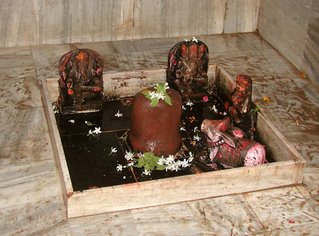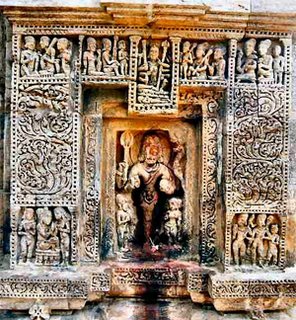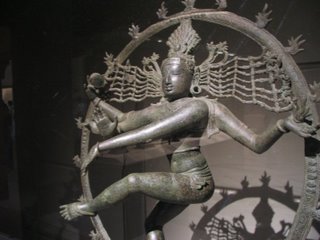Navaratri is attributed to 9 days when Shakti is worshipped in all her forms. The three primary forms of Shakti worshipped are Durga, Saraswati and Lakshmi. Durga renders courage while Saraswati gives knowledge and education and Lakshmi brings home wealth and prosperity.
During the first three days, three forms of Durga are worshipped respectively. They are Maheshwari, Gaumaari, and Varahi who are Durga swarupinis. On the next three days Lakshmi Swarupinis are worshipped and they are Mahalakshmi, Vaishnavi and Indrani respectively. On the last three days three forms of Saraswati are worshipped and they are Brahmi, Narasimhi and Chamundi respectively.
The origin of Navaratri came about when Adi Shankaracharya gave Upadesham to the people at two primary locations during the installation of the Sri Chakra. He delivered his Upadesham at Srisailam(Andhra Pradesh) and Koolurmugambika(Karnataka). He directed the women folk to worship the Goddess and seek her blessings for wealth, prosperity and long life for their husbands and overall hapiness in the family.
Shakti is worshipped through puja, music, rangolis as well as through daanam all of which are done at the same time.
Shakti worship in Puja:Navaratri is the time when the great Rishis performed puja through the medium of fire. This is known as Sri Mangala Chandi Maha Chandi Homam(Havan). Markandeya Rishi gives references of 108 forms of Shakti from the Devi Bhagavata in 700 mantras
spread across 13 chapters. During the worship through fire, banyan sticks and ghee offerings are made along with the offering of a saree into the flames of the yagna. Mantras sung during this Homam offer worship to SriMahakali, SriMahalakshmi,
SriShankari, SriJayadurga, SriMahasaraswati, SriPadmavati, SriRajamathangi, SriBhavani, SriAarthaambika, SriKameshwari, SriBhuvaneshwari, SriAgnidurga and SriShivadharika Parameshwari who is another form of Ardhanaarishwara. During the worship, the Goddess reveals each of these forms during the time of Navaratri.
While Rishis perform through the medium of fire, women at home perform the same puja through the medium of water. Water, considered as the essence of the Goddess Herself is taken in a brass Kalasham(pot) on which sandalwood paste is applied. Turmeric powder and Kumkum are smeared on the sides of the Kalasham. The mouth of the pot is covered with mango leaves held in place by a coconut. The Kalasham is covered with a red cloth and this whole arrangement is placed over raw rice.
The arrangement of dolls on steps follows this where all the Gods and Devas are arranged at home. This is called
Gollu puja in the south of India.
The significance of keeping Gollu at home is to teach the yourger generation of children the tradition of worship of the Goddess through a medium best understood by them. Oil lamps are lit for all the Gods and this ensures that the oncoming
generations of the family do not move away from the spiritual path or tradition.
Shakti worship in music:Carnatic music makes references to the 108 forms of the Goddess through songs composed in her praise. These songs are sung during this period in 9 ragas namely Todi, Kalyani, Kambodi, Bhairavi, Banduvarali, Neelambari, Bhilahari, Punnahavarali and Vasanta Ragas.
Shakti worship through rangoli:9 types of rangoli are made at home for each day.
Day 1: Rangoli is made with dots
Day 2: Rangoli is made with squares
Day 3: Rangoli is made with flowers (lotus, rose etc)
Day 4: Rangoli is made with steps (like gollu puja)
Day 5: Rangoli is made with birds
Day 6: Rangoli is made with one of the names of Shakti
Day 7: Rangoli is made with Vittarani (designs from the palm of the Goddess's hands, like shanka, flowers etc)
Day 8: Rangoli patterns with the trishul (trident) she holds in her hand
Day 9: Rangoli is made with Hridaya Kamalam (Lotus of her heart)
Shakti worship through daanam: Married women( sumangalis) are invited home during this period and offerings of gingerli oil, turmeric powder, kumkum, rose water, sandalwood powder, cosmetics oils, nalangu manjal (a red paste made of kumkum and turmeric and applied to the hands and feet), ground mehandi and flowers are made.
This completes the worship of Shakti during the 9 auspitious days of Navaratri.


















